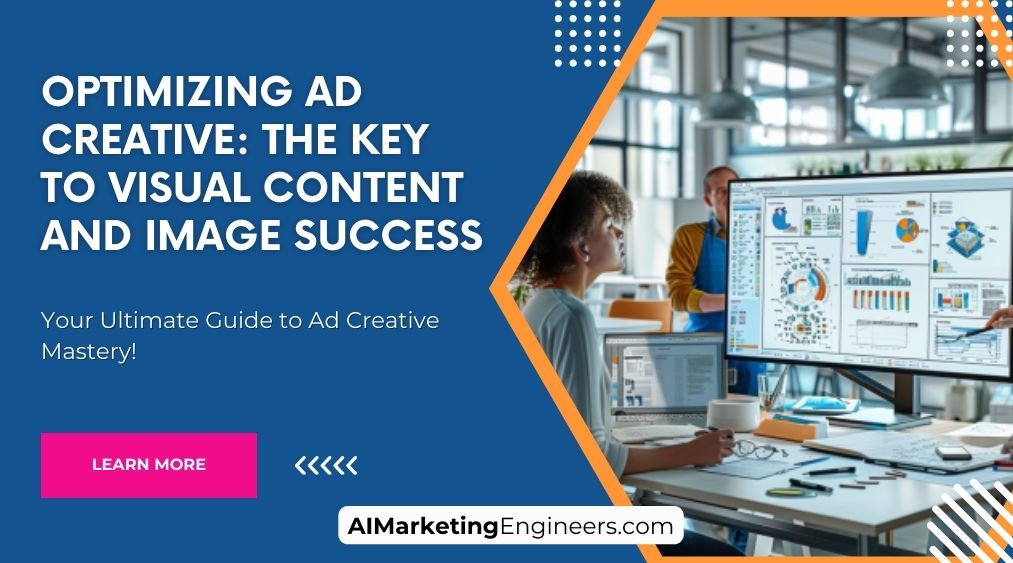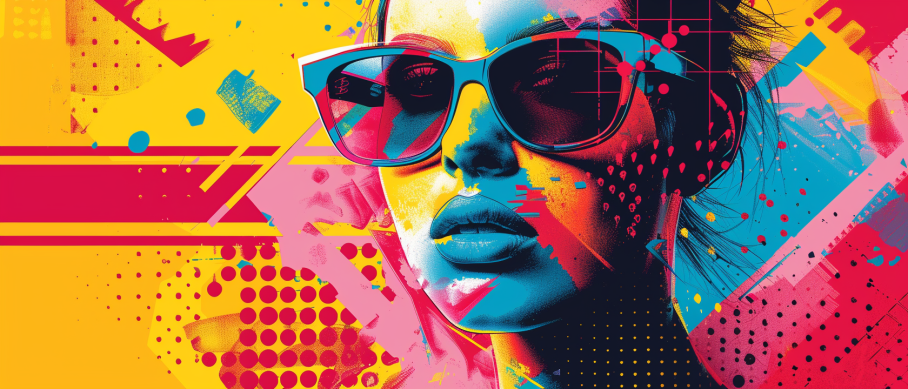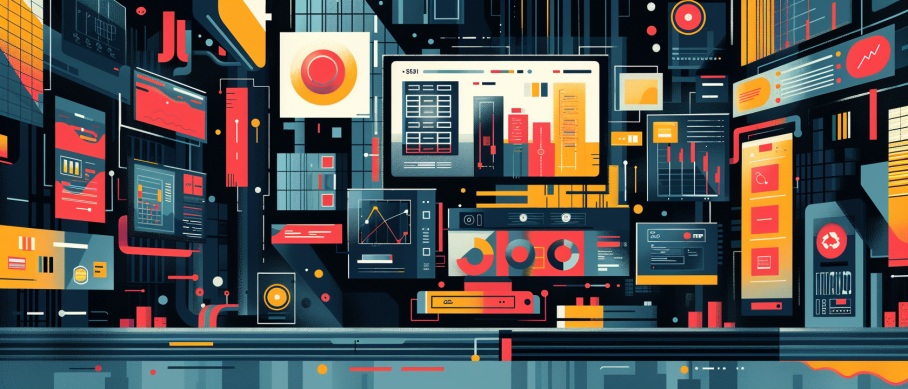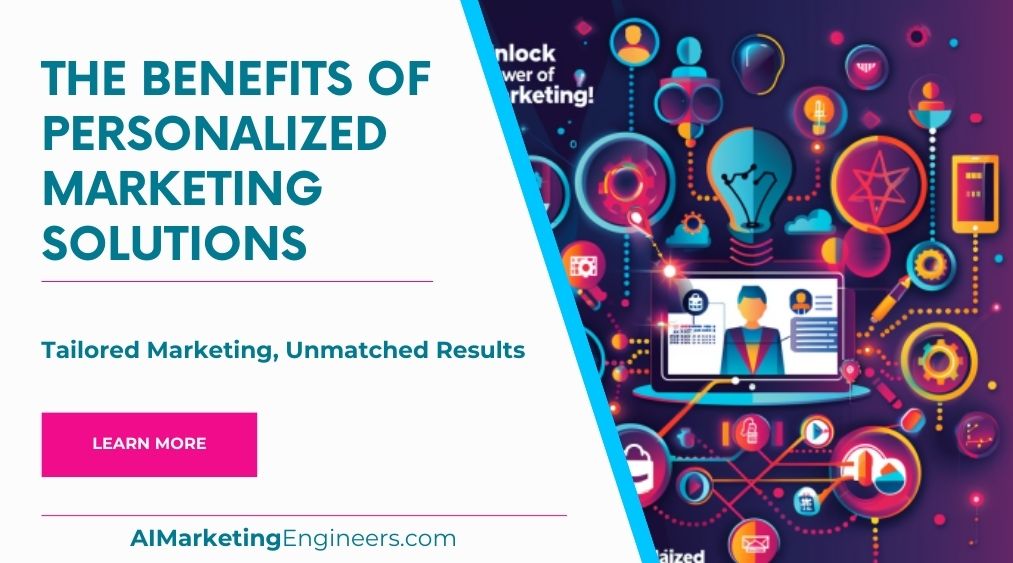Key Takeaways
✅ Visual content is the cornerstone of grabbing attention in today's digital landscape. Statistically, content with relevant images gets 94% more views than content without. This underscores the need for optimizing ad creative that's not just eye-catching but also tells your brand's story effectively.
✅ A/B testing is pivotal to determining what resonates with your audience. Did you know that using the right images can lead to a 65% increase in engagement? That's why testing different ad creatives to see what works best isn't just useful—it's essential for a successful marketing strategy.
✅ Data guides the path to improvement. By analyzing and acting on insights drawn from your ad's performance, you can enhance the visual content's appeal. Reports show that businesses that leverage data can increase their marketing ROI by 15-20%. Let numbers inform your creativity for maximum impact.
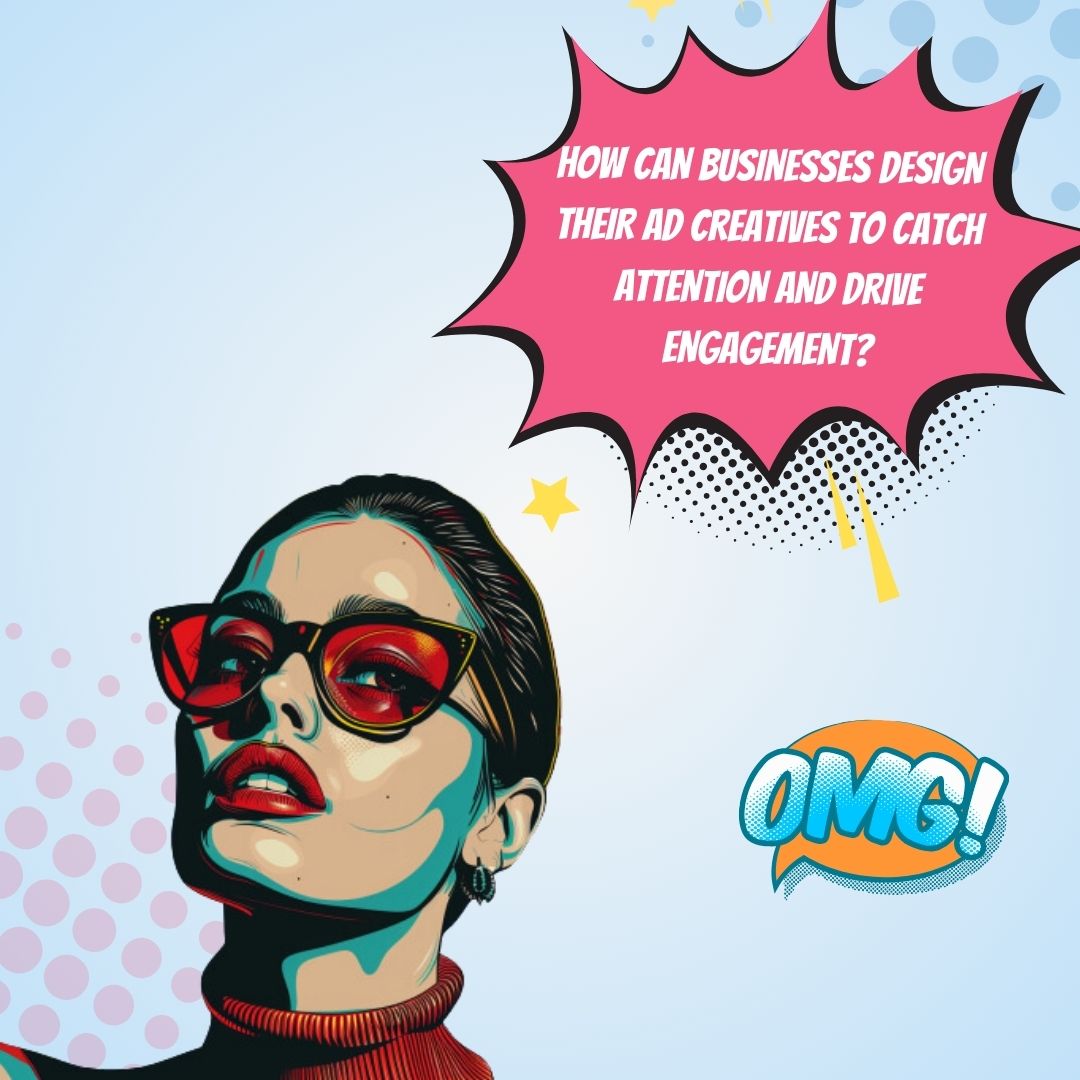
Introduction
Ever wondered why some ads seem to leap off the screen and lodge themselves firmly in your memory? Welcome to the world of optimizing ad creative, the unsung hero behind many a successful campaign. Today, people are bombarded with images, gifs, and videos, making it critical to ensure your visual content is not just seen, but remembered.
This article peels back the layers on how to make your visual content outshine the rest. Whether it's increasing revenue, maximizing return on ad spend (ROAS), or boosting your investment's return (ROI), we'll dive into innovative methods and modern trends that could turn good into great.
Stay with us as we unpack groundbreaking insights and practical solutions to elevate your visual content and drive better results. Get ready to see, think, and design differently.
Top Statistics
| Statistic | Insight |
|---|---|
| Shared Visual Content: Visual content is 40 times more likely to be shared on social media than other types of content. | The sheer power of visuals to amplify reach on social media cannot be understated, making compelling graphics and videos essential for engagement. |
| Consumer Interaction with Visuals: 90% of information transmitted to the brain is visual, and visuals are processed 60,000 times faster than text. | This statistic highlights the instantaneous impact that an image or graphic can have, which is critical when catching a consumer's fleeting attention. |
| Expectations for Brand Content: 84% of consumers expect brands to create content that entertains, provides solutions, and creates experiences. | Consumers today are not just buying a product or service, they are looking for an overall experience and content that adds value to their lives. |
| Visuals Leading to Purchase: 65% of consumers are more likely to make a purchase after viewing a video about a product or service. | Videos have become powerful tools for conversion, capable of not just presenting a product, but also conveying its use, benefits, and context. |
| Importance of Images in Local Search: 60% of consumers are more likely to consider or contact a business that has an image show up in local search results. | This emphasizes the necessity for businesses to manage their online presence visually, including in search engine results and business listings. |
Understanding Your Audience
When crafting ads, do you really know who's going to see them? Knowing your target audience is not just about recognizing a face in the crowd; it's about understanding what makes that face smile, frown, and decide to buy your product. Conducting market research isn't just a formality—it's a treasure hunt for insights into what your customers love and loathe. Demographic analysis can reveal a day in the life of your potential buyer. Have you noticed how beer ads differ when they target different age groups? That's understanding audience preferences at play, shaping ad creative decisions toward success.
Creating a Compelling Visual Story
It's not just about what you sell, it's about the story you tell. A visually compelling narrative can connect the dots between your product and your audience's needs. By curating a visual storytelling experience, brands can engrave their message in the minds of viewers. Keep it clear, keep it concise, and let the visuals do the talking. Remember the iconic "Just Do It" Nike ads? They tap into the aspirations of athletes worldwide, with just a swoosh and slogan to narrate the athletic journey.
Utilizing Color Psychology
Have you ever felt energized by a bright orange or soothed by a soft blue? That’s the power of color psychology at work. Picking the right color scheme for your ad isn't a shot in the dark—it’s a strategic choice that can define consumer reaction. Align color choices with your brand identity and you'll see how palettes can persuade. Food chains like McDonald’s don't just stumble upon red and yellow; these colors stimulate appetite and grab attention, encouraging that next quick meal decision.
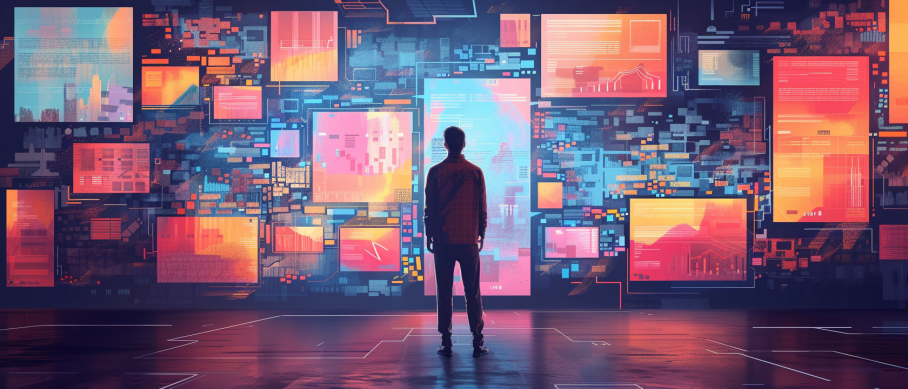
Balancing Text and Images
In the quest for attention-grabbing ads, the text-to-image ratio is a tightrope walk of communication. Balancing text and images is a craft—too much text can overwhelm, too little can confuse. Effective ad creatives master the art of marrying visuals with just enough words to deliver a punchy message. Consider how the minimalistic ads of Apple balance sleek images with succinct text to create an aura of innovation and simplicity.
Leveraging High-Quality Images
In the age where everyone carries a high-definition camera in their pocket, settling for less than high-quality images for your ads is like serving a gourmet meal on a paper plate. It just doesn't do justice to your product. Invest in photos that stop thumbs on social feeds, that command attention on billboards, that make people look twice. Ads like those from car manufacturers, polished to perfection, not only turn heads but also set the standard for visual appeal.
Continuous Testing and Optimization
Releasing an ad into the wild without testing is like throwing a dart blindfolded—you might hit the mark, but wouldn't it be better to see the target? A/B testing provides real-world answers to what works and what doesn't. This ongoing process of tweaking and improving can lead to a significant increase in engagement and conversions. Ever noticed how one ad seems to follow you around the internet, changing slightly with each encounter? That's continuous optimization in action, refining messages and visuals to resonate deeper each time.

AI Marketing Engineers Recommendation
Recommendation 1: Leverage Data Analytics to Understand Visual Impact: Employ data analytics to gauge the performance of your current visual content. Look into metrics such as engagement rate, click-through rate (CTR), and conversion rate of existing ad creatives. Especially focus on A/B testing different elements such as color schemes, image composition, and call-to-action placement. For example, a study by Buffer found that tweets with images received 150% more retweets than those without images, strongly indicating the power of visuals in engagement. Align your visual strategy with the data insights to Optimize Ad Creative for enhanced performance.
Recommendation 2: Embrace the Power of Personalization and Timeliness: Be strategic by tapping into the power of personalization. Use customer data to create personalized visual content that resonates with your audience's preferences, behaviors, and needs. According to recent research, personalization can lead to a 20% increase in sales opportunities. Also, infuse current trends, cultural moments, or real-time events to make ad creatives more relevant and engaging. Remember, a personal touch can convert a passive viewer into an active customer, making it a key tactic in enhancing Visual Content and Image Success.
Recommendation 3: Utilize AI-Driven Creative Optimization Tools: Integrate AI-driven tools and platforms that offer creative optimization capabilities. These tools can automatically test different variations of visuals, helping identify the most effective ones. One such tool is Google's Responsive Display Ads, which allows for the automatic optimization of ad assets for better performance. By using machine learning, it can save you time and improve ad efficiency, providing a decisive edge in Optimizing Ad Creative. The relevance comes from the AI's ability to learn from user interactions, thus continuously improving the appeal and effectiveness of your visual content.
Relevant Links
- Unlock WeChat's Marketing Power: Your Ultimate Guide to Success in China
- Captivating Audiences with China's Short-Video Giants: Douyin and Kuaishou Unleashed
- The Evolution of Video Marketing in South Korea: Trends, Platforms, and Success Strategies
- The Art of SEO in South Korean E-Commerce: Master the Market and Drive Sales
- Adapt and Succeed: Navigating China's Consumer Behavior Trends in 2024
Conclusion
As we reach the end of our exploration of Optimizing Ad Creative, it's clear that the visuals we choose wield significant power over our campaign's success. In a world where our attention is a highly-coveted prize, how we craft the visual content of our ads can be the deciding factor between being noticed or ignored. From understanding your audience deeply to creating a visual storyline that resonates, the path to impactful advertising is both creative and strategic.
The key takeaways from our discussion provide a roadmap for marketers looking to capture and retain audience attention. Do you know who you're talking to? Are your ads telling a story that speaks directly to your audience's interests and needs? Have you considered how the colors you use align with the emotions you aim to evoke? Is the balance between text and imagery tipping the scales towards engagement or confusion? And importantly, are your images of a quality that reflects the excellence of your brand?
Remember, deploying high-quality visuals is not just a creative choice; it's an investment in the perception and performance of your brand. And as you test, refine, and optimize your ad creatives, you're not just hoping for better results, you're building a robust, data-driven strategy that adapts and thrives in the ever-changing marketplace.
So what’s your next step? Perhaps it's revisiting your current campaigns with a fresh set of eyes—the eyes of your customer. Or maybe it's investing time in A/B testing to robustly understand how minor changes can yield significant improvements. As you move forward, keep the importance of visual content and image success at the forefront of your marketing efforts. Remember, the path to optimization is continuous, but the rewards are well worth the journey.
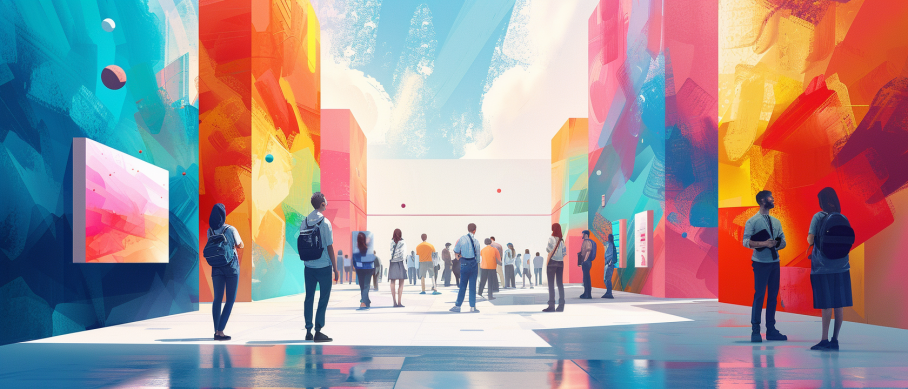
FAQs
Question 1: What is ad creative optimization, and why is it important?
Answer: Ad creative optimization is about making your ads look better so they work better. Imagine you make an eye-catching poster; more people stop and read it, right? That's the idea here, but for ads. The better they look, the more people will click and the better your campaign does.
Question 2: What are the key elements of a successful ad creative?
Answer: Think of a great ad like a tasty burger. What do you need? Fresh ingredients! That's your catchy images, clear words, a strong 'come on in' - or call-to-action - and that unique flavor that says 'this is us'. Yum!
Question 3: How can I ensure my ad creatives are visually appealing?
Answer: Well, you want to catch eyes, right? Use top-notch pictures, pop with some color, and keep it super clean - no messy designs. Maybe add a little pizzazz with some fun pictures or clips to draw folks in.
Question 4: What are the best practices for ad creative testing and iteration?
Answer: It's like baking cookies. Try out a small batch with different bits - nuts, chocolate chips - then see which tastes best. Use the winner as your go-to recipe. Same with ads: test small, then use what gets you the thumbs up.
Question 5: How can I create ad creatives that stand out in a crowded market?
Answer: Be you! Be different! Stand out with something no one else is doing. Real stuff from your users, cool partnerships, and catching the next big wave before others do can make folks turn heads.
Question 6: What are the best image sizes and formats for different ad platforms?
Answer: Okay, so for Facebook and Instagram, go square. Twitter likes it more panoramic. And YouTube is all about that widescreen action. Get the pixels right, and you're golden.
Question 7: How can I use data and analytics to optimize my ad creatives?
Answer: Think of data like a treasure map. Follow the Xs - which are your click-throughs and likes - and they'll lead you to what works best. Then just keep digging there!
Question 8: What is the role of A/B testing in ad creative optimization?
Answer: A/B testing is like trying on two outfits to see which one looks better. You've got two ads? Test 'em. See which one gets you more fans. Then wear that one to the party.
Question 9: How can I optimize my ad creatives for mobile devices?
Answer: Mobile is like a small window - you want to fill it up! Go tall with your images and videos, trim the chatter, and make sure it all loads super-fast.
Question 10: What are some advanced techniques for optimizing ad creatives?
Answer: Ready to level up? Personalize ads with some nifty tech, dive into the cool world of AR or VR, or get interactive with fun stuff like polls. Keep 'em glued to your ad!

Academic References
- Lee, A. Y., & Thorson, E. (2008). The Effect of Visual Complexity on Advertising Recall and Attitude: The Moderating Role of Brand Familiarity. Journal of Advertising, 37(1), 39-48. This study uncovers that while visual complexity in advertising can improve memory and attitudes toward the ad, the benefits are notably greater for brands that are less known to consumers.
- Labrecque, L. I., & Milne, G. R. (2012). The Impact of Color on Marketing. Journal of Business Research, 65(1), 95-102. These researchers pinpoint the critical role of color in shaping consumer perceptions, emphasizing that the right choice of colors can dramatically bolster brand recognition and effectiveness of advertisements.
- Chang, C., & Chang, Y. (2015). The Effects of Advertising Repetition and Brand Familiarity on Brand Attitude and Purchase Intention. Journal of Business Research, 68(1), 110-116. This paper discusses how repeated exposure to an advertising creative can boost brand familiarity, enhance attitudes towards the brand, and subsequently increase the willingness of consumers to purchase.
- Kim, K. H., & Na, J. H. (2014). The Effect of Advertising Creativity on Brand Attitude and Purchase Intention. Journal of Promotion Management, 20(1), 119-133. According to Kim and Na, advertisements that are perceived as creative can positively influence brand attitudes and the intent to purchase, particularly for products that don't typically require significant consumer involvement.
- Yoon, S., Faber, R. J., & Coovert, M. D. (2014). The Impact of Visual Attention on Advertising Effectiveness. Journal of Advertising, 43(3), 277-291. This article investigates how capturing visual attention through ad creative contributes to enhanced effectiveness of advertising, leading to better brand awareness and recall.
- Ahluwalia, R., & Burnkrant, R. E. (2004). The Effect of Advertising Imagery on Brand Preference: The Role of Visual Imagery and Congruence. Journal of Consumer Research, 31(1), 104-114. This research explores how the use of congruent visual imagery within advertising can significantly influence consumer's brand preferences, demonstrating the powerful effect of aligning ad imagery with consumer expectations.
